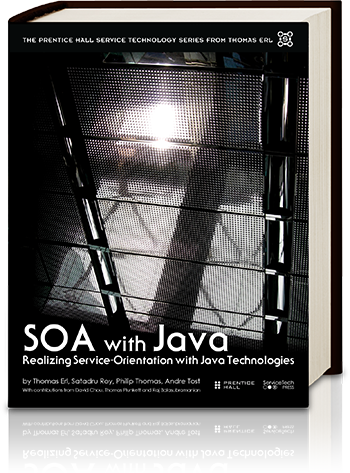This book begins with Chapters 1 and 2 providing introductory content and case study background information respectively. Provided here is a brief overview of subsequent chapters.
– Part I: Fundamentals
– Part II: Services
– Part III: Service Composition and Infrastructure
– Part IV: Appendices
Below are descriptions of individual parts and chapters:
Chapter 1: Introduction
 This chapter establishes the scope and structure of the book by providing an overview of the primary topic areas along with chapter descriptions and information regarding conventions and supplemental resources.
This chapter establishes the scope and structure of the book by providing an overview of the primary topic areas along with chapter descriptions and information regarding conventions and supplemental resources.
Chapter 2: Case Study Examples
 The chapters in this book contain numerous case study examples, all of which relate back to the case study background information established in this chapter.
The chapters in this book contain numerous case study examples, all of which relate back to the case study background information established in this chapter.
Part I: Fundamentals

The four chapters in this part cover introductory topics related to SOA, service-orientation, Web-based services technology, and Java. Note that these chapters do not contain case study content.
Chapter 3: Fundamental SOA Concepts
Chapter 4: Basic Java Distributed Technologies
Chapter 5: Web-Based Service Technologies
Chapter 6: Building Web-Based Services with Java
Chapter 3: Fundamental SOA Concepts

This chapter provides an overview of key terms and concepts associated with SOA, service-orientation, and service-oriented computing.
Chapter 4: Basic Java Distributed Technologies
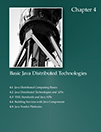 With an emphasis on Java EE, this chapter introduces Java technologies and APIs relevant to this book. Open-source and commercial Java vendor platforms are further referenced.
With an emphasis on Java EE, this chapter introduces Java technologies and APIs relevant to this book. Open-source and commercial Java vendor platforms are further referenced.
Chapter 5: Web-Based Service Technologies
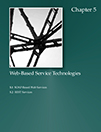 This chapter provides a concise overview of the industry standards and conventions that form the basis for SOAP-based Web services and REST services. A series of examples is provided for each service implementation medium.
This chapter provides a concise overview of the industry standards and conventions that form the basis for SOAP-based Web services and REST services. A series of examples is provided for each service implementation medium.
Chapter 6: Building Web-Based Services with Java
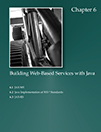 This chapter focuses on the JAX-WS standard for SOAP-based Web services and the JAX-RS standard for REST services, and provides numerous examples that demonstrate basic design and implementation.
This chapter focuses on the JAX-WS standard for SOAP-based Web services and the JAX-RS standard for REST services, and provides numerous examples that demonstrate basic design and implementation.
Part II: Services

This part of the book contains a set of chapters that highlight key Java design considerations introduced by service-orientation principles, and further explores their application to the creation of Java-based utility and entity services.
Chapter 7: Service-Orientation Principles with Java Web-Based Services
Chapter 8: Utility Services with Java
Chapter 9: Entity Services with Java
Chapter 7: Service-Orientation Principles with Java Web-Based Services
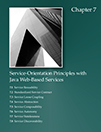
This chapter documents each of the eight service-orientation design principles as they affect and relate to the use of Java-based technology for both SOAP-based Web services and REST services.
Chapter 8: Utility Services with Java
 The unique design considerations that come with building utility services with Java are addressed in a series of sections that explore architecture, design, and implementation, further supported by a number of examples.
The unique design considerations that come with building utility services with Java are addressed in a series of sections that explore architecture, design, and implementation, further supported by a number of examples.
Chapter 9: Entity Services with Java
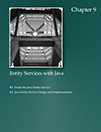
This chapter discusses the development of entity services with Java with an emphasis on service contract and message standardization, data access, and processing
.
Part III: Service Composition and Infrastructure
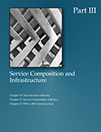
The final set of chapters build upon Parts I and II to tackle the design and implementation of entire Java-based service-oriented solutions. Topics covered range from service composition to ESB-related infrastructure considerations.
Chapter 10: Task Services with Java
Chapter 11: Service Composition with Java
Chapter 12: ESB as SOA Infrastructure
Chapter 10: Task Services with Java
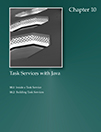
This chapter discusses the characteristics, design, and implementation considerations of building task services with Java and further addresses preliminary service composition issues in preparation for Chapter 11.
Chapter 11: Service Composition with Java
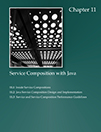 This chapter covers a spectrum of topics that pertain to and further expand upon many of the areas already covered in preceding chapters to focus on the design, implementation, and performance of services aggregated into Java-based service compositions.
This chapter covers a spectrum of topics that pertain to and further expand upon many of the areas already covered in preceding chapters to focus on the design, implementation, and performance of services aggregated into Java-based service compositions.
Chapter 12: ESB as SOA Infrastructure
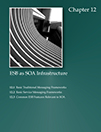 This chapter highlights the use of ESB-based middleware and infrastructure in relation to service-oriented solution and service composition architecture and implementation.
This chapter highlights the use of ESB-based middleware and infrastructure in relation to service-oriented solution and service composition architecture and implementation.
Part IV: Appendices

Appendix A: Case Study Conclusion
Appendix B: Service-Orientation Principles Reference
Appendix C: SOA Design Patterns Reference
Appendix D: The Annotated SOA Manifesto
Appendix A: Case Study Conclusion

This appendix provides a conclusion of the case study storylines first established in Chapter 2.
Appendix B: Service-Orientation Principles Reference

This appendix provides the profile tables (originally from SOA Principles of Service Design) for the service-orientation design principles referenced in this book.
Appendix C: SOA Design Patterns Reference

This appendix provides the profile tables from the design patterns documented in the books SOA Design Patterns and SOA with REST: Principles, Patterns & Constraints for Building Enterprise Solutions with REST.
Appendix D: The Annotated SOA Manifesto
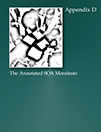
This appendix provides the annotated version of the SOA Manifesto declaration, which is also published at www.soa-manifesto.com.


